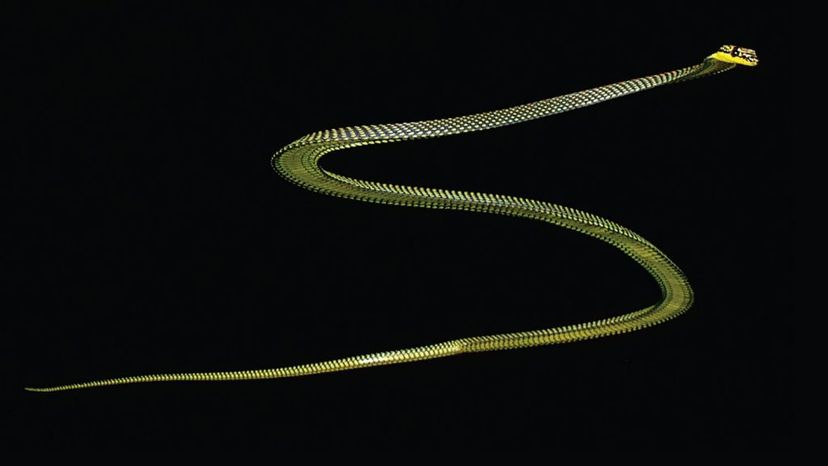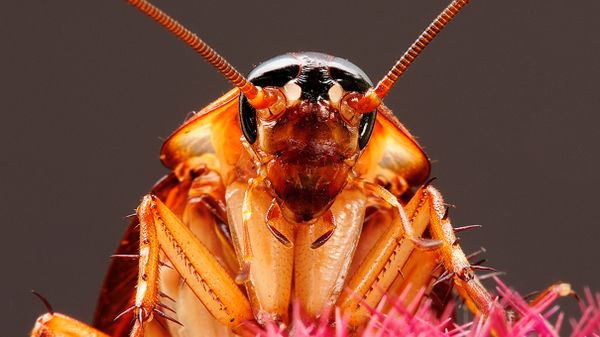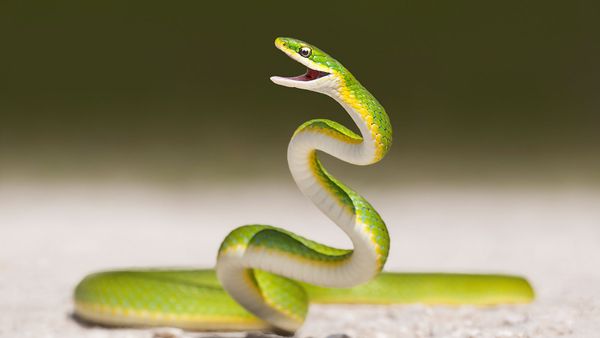
Flying animals are common, but not particularly diverse. Birds, bats, insects and pterosaurs (extinct dinosaur relatives with complex wing membranes) are the only four groups of organisms that've ever evolved the ability to fly.
Even so, the sky's not the limit for "flying" snakes in the genus Chrysopelea. While these reptiles can't actually fly, they "fall with style" (props to Buzz Lightyear from "Toy Story"), gliding over long horizontal distances — despite their lack of wings. And, you know, legs.
Advertisement
Life in the Trees
Five Chrysopelea snakes have been discovered in total. The smallest is the 2-foot (61-centimeter) banded flying snake and the biggest species, called the ornate or "golden" flying snake, can get to be 4 feet (1.6 meters) long. Rounding out this little quintet are the paradise tree snake, Moluccan flying snake and Indian flying snake.
Consummate tree-dwellers, flying snakes occur in the rainforests of southern and southeastern Asia. Being gliders — and not true flyers — Chrysopelea snakes don't produce thrust when they go airborne. That renders them incapable of traveling upwards through the air.
Some of their neighbors have the same problem. Gliders are stunningly common in Asia's southeastern rainforests. Besides "flying" snakes, these ecosystems include gliding squirrels, gliding frogs and various gliding lizards.
Biologists don't know what makes the trait so widespread here. But that might have something to do with dipterocarp trees. Common in southeastern Asia, these plants can grow 197 feet (60 meters) tall. The lower halves of their trunks are pretty much branchless — which is a huge inconvenience for tree-climbing animals.
Maybe all these unrelated critters evolved the ability to glide as a way of getting from treetop to treetop more easily. It sure beats scampering up and down limbless trunks all day.
The Mechanics of Gliding
Flying snakes have mysterious habits out in the wild. "We actually don't know why they glide — there are no studies that address the topic. (I have been interested for years)," says herpetologist Jake Socha in an email.
"But anecdotally," he says, "I have seen them use it for escape, from me and other people. And it is also possible and likely that they use it for effective locomotion — to move to another tree or to the ground in a short time, or to avoid slithering over substrates where they could encounter a predator."
A professor at Virginia Tech, Socha has been studying these snakes for over two decades. This past summer, he co-authored a new paper about their aerial antics.
When a flying snake launches itself off of some tree or elevated surface, its ribs splay outwards, flattening the animal from the neck to the nether regions. The process helps Chrysopelea snakes create lift — an upward-acting physical force that airplanes take advantage of — by making their bodies more aerodynamic.
What this does to their internal organs is another mystery. At all rates, the method gets results: Flying snakes have been seen gliding across distances of up to 330 feet (100 meters) horizontally.
Advertisement

